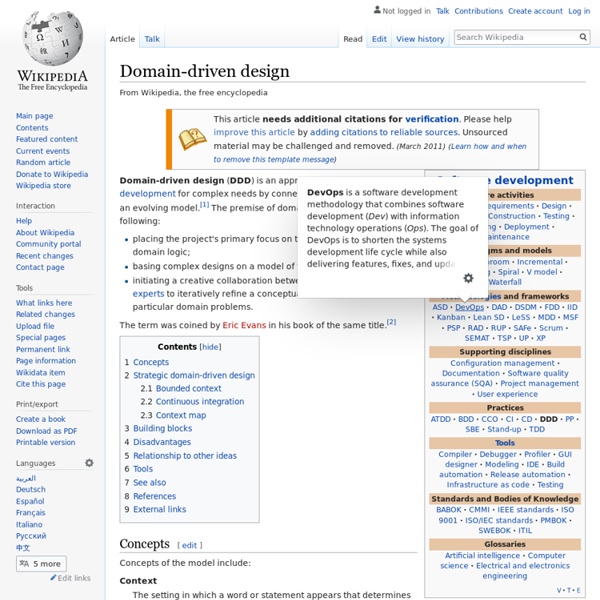Designing and Theming Drupal for Mobile Devices
20 lines of code that will beat A/B testing every time
Zwibbler.com is a drop-in solution that lets users draw on your web site. A/B testing is used far too often, for something that performs so badly. It is defective by design: Segment users into two groups. Show the A group the old, tried and true stuff. Show the B group the new whiz-bang design with the bigger buttons and slightly different copy. In recent years, hundreds of the brightest minds of modern civilization have been hard at work not curing cancer. With a simple 20-line change to how A/B testing works, that you can implement today, you can always do better than A/B testing -- sometimes, two or three times better. It can reasonably handle more than two options at once.. The Multi-armed bandit problem The multi-armed bandit problem takes its terminology from a casino. Like many techniques in machine learning, the simplest strategy is hard to beat. def choose(): if math.random() < 0.1: # exploration! Why does this work? Let's say we are choosing a colour for the "Buy now!"
8-Circuit Model of Consciousness
The eight-circuit model of consciousness is a theory proposed by Timothy Leary and expanded on by Robert Anton Wilson and Antero Alli. The model describes eight circuits of information (eight "brains") that operate within the human nervous system. Each circuit is concerned with a different sphere of activity. Leary, Alli and Wilson have written about the model in depth and how each circuit operates, both in the lives of individual people and in societies. The term "circuits" came from the first wave of cybernetics research and development in the United States in the 1970s. The eight circuits[edit] 1. This circuit is concerned with nourishment, physical safety, comfort and survival, suckling, cuddling etc. This circuit is activated in adults by opioids such as morphine and heroin. A positive imprint sets up a basic attitude of trust. This circuit is said to have appeared in the earliest evolution of the invertebrate brain and corresponds to the reptilian brain of triune brain theory. 2. 3.
Understanding the Eight Jungian Cognitive Processes / Eight Functions Attitudes
The Happiness Project Toolbox
The Plutchik Emotion Circumplex And The 8 Primary Bipolar Emotions | FEELguide
Robert Plutchik (1927 – 2006) was Professor Emeritus at the Albert Einstein College of Medicine and adjunct professor at the University of South Florida. He received his Ph.D. from Columbia University and he was also a psychologist. He has authored or coauthored more than 260 articles, 45 chapters and eight books and has edited seven books, and the primary focus of his research included the study of emotions, the study of suicide and violence, and the study of the psychotherapy process. Plutchik’s psychoevolutionary theory of emotion is one of the most influential classification approaches for general emotional responses, where he considered there to be eight primary emotions: anger, fear, sadness, disgust, surprise, anticipation, trust, and joy. Joy vs. Additionally, his circumplex model makes connections between the idea of an emotion circle and a color wheel. Source: Swiss Miss and Wikipedia
A Brief Rant on the Future of Interaction Design
So, here's a Vision Of The Future that's popular right now. It's a lot of this sort of thing. As it happens, designing Future Interfaces For The Future used to be my line of work. I had the opportunity to design with real working prototypes, not green screens and After Effects, so there certainly are some interactions in the video which I'm a little skeptical of, given that I've actually tried them and the animators presumably haven't. But that's not my problem with the video. My problem is the opposite, really — this vision, from an interaction perspective, is not visionary. This matters, because visions matter. This little rant isn't going to lay out any grand vision or anything. Before we think about how we should interact with our Tools Of The Future, let's consider what a tool is in the first place. I like this definition: A tool addresses human needs by amplifying human capabilities. That is, a tool converts what we can do into what we want to do. That's right! And that's great!
30 Essential Controls
By Theresa Neil As Bill mentioned in an earlier post, we don’t want to limit this blog to just the principles and patterns found in the book. For that you can check out our Explore the Book section. This is the second article in a three part series on patterns and principles for RIA design. Standard Screen Patterns: 12 patterns w/100 examplesEssential Controls: 30 controls for RIA design and developmentComponents for Commonly Requested Features: 15 patterns and examples Every designer has a set of controls they rely on to communicate an effective UI. Unfortunately, no single RIA framework offers all 30 of these. The frameworks reviewed include: Flex, Laszlo, Silverlight and 12 Ajax frameworks and toolkits: ExtJS, Dojo, YUI, Google Web Toolkit, Prototype/script.aculo.us, JQuery, MooTools, MochaUI, SproutCore, LivePipeUI,IT Mill, Backbase. 01. Google’s Auto-Complete 02. Carousel Prototype carousel widget Supported by: YUI, Prototype/script.aculo.us, JQuery, ITMill, Backbase, iCarousel 03. 04.



